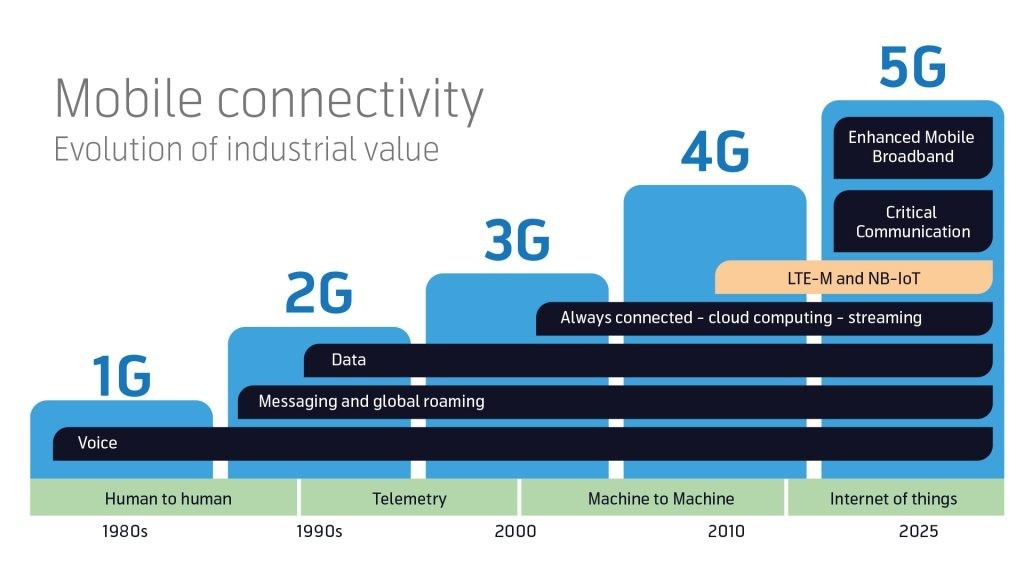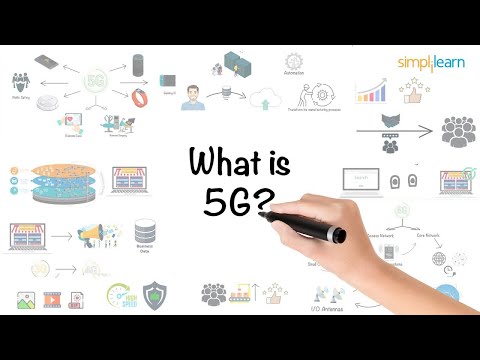Evolution of Mobile Networks: 1G to 5G Explained
telcomatraining.com – Mobile networks have transformed the way we communicate, work, and live. From the early days of analog voice calls to today’s lightning-fast data speeds, each generation of mobile technology has marked a significant leap forward. In this article, we’ll explore the evolution of mobile networks—1G to 5G—explaining their key features, advantages, and impact on society.
1G: The Birth of Mobile Communication
The first generation, or 1G, was introduced in the late 1970s and early 1980s. It relied on analog technology and was designed exclusively for voice communication.
- Key Features: Analog voice calls, large and heavy mobile phones, limited coverage.
- Speed: Around 2.4 Kbps.
- Limitations: Poor voice quality, no encryption, and frequent dropped calls.
Despite its drawbacks, 1G was revolutionary—it allowed people to make calls without being tied to landlines, paving the way for the mobile revolution.
2G: The Digital Era Begins
In the early 1990s, 2G networks arrived, introducing digital signals and text messaging (SMS). This was the start of mobile phones becoming more than just voice devices.
- Key Features: SMS, MMS, improved voice quality, and better coverage.
- Speed: 64 Kbps to 200 Kbps.
- Technology Used: GSM, CDMA.
2G also enabled encryption, making calls more secure. This generation laid the foundation for mobile data and set the stage for the mobile internet.
3G: The Rise of Mobile Internet
Launched in the early 2000s, 3G networks changed the way people used their phones by enabling mobile internet access. Smartphones emerged during this era, and mobile applications began to flourish.
- Key Features: Web browsing, video calling, and email on mobile devices.
- Speed: 384 Kbps to several Mbps.
- Technology Used: UMTS, HSPA.
With 3G, users could browse websites, access social media, and stream low-quality videos. It marked the true beginning of the smartphone lifestyle.
4G: High-Speed Data and Streaming
The launch of 4G networks in the late 2000s and early 2010s ushered in the era of high-speed mobile internet. This generation was designed primarily for data transfer, making it possible to stream HD videos, play online games, and use cloud-based applications seamlessly.
- Key Features: Mobile HD streaming, video conferencing, VoIP (Voice over Internet Protocol).
- Speed: 10 Mbps to 100 Mbps.
- Technology Used: LTE, WiMAX.
4G made smartphones indispensable, enabling apps like Netflix, Uber, and Zoom to thrive. It was also the foundation for the mobile app economy, which has grown into a trillion-dollar industry.
5G: The Future of Connectivity
The most recent generation, 5G, began rolling out in 2019. It is more than just faster internet—it’s the backbone of next-generation technology, including smart cities, autonomous vehicles, and the Internet of Things (IoT).
- Key Features: Ultra-fast speed, ultra-low latency, massive device connectivity.
- Speed: Up to 10 Gbps (100 times faster than 4G).
- Technology Used: mmWave, Massive MIMO, beamforming.
With 5G, users can download movies in seconds, enjoy lag-free gaming, and experience immersive technologies like virtual reality (VR) and augmented reality (AR). On a larger scale, 5G will power industries, healthcare, and transportation systems.
Conclusion: From Analog to Intelligent Connectivity
The evolution from 1G to 5G reflects humanity’s desire for faster, more reliable, and more connected communication. Each generation has built upon the last, shifting from basic voice calls to digital messaging, mobile internet, high-speed streaming, and now intelligent connectivity.
As we look forward, 6G is already being researched, promising even more transformative possibilities such as holographic communication and AI-driven networks. But for now, 5G is shaping the way we live, work, and interact in the digital age.







